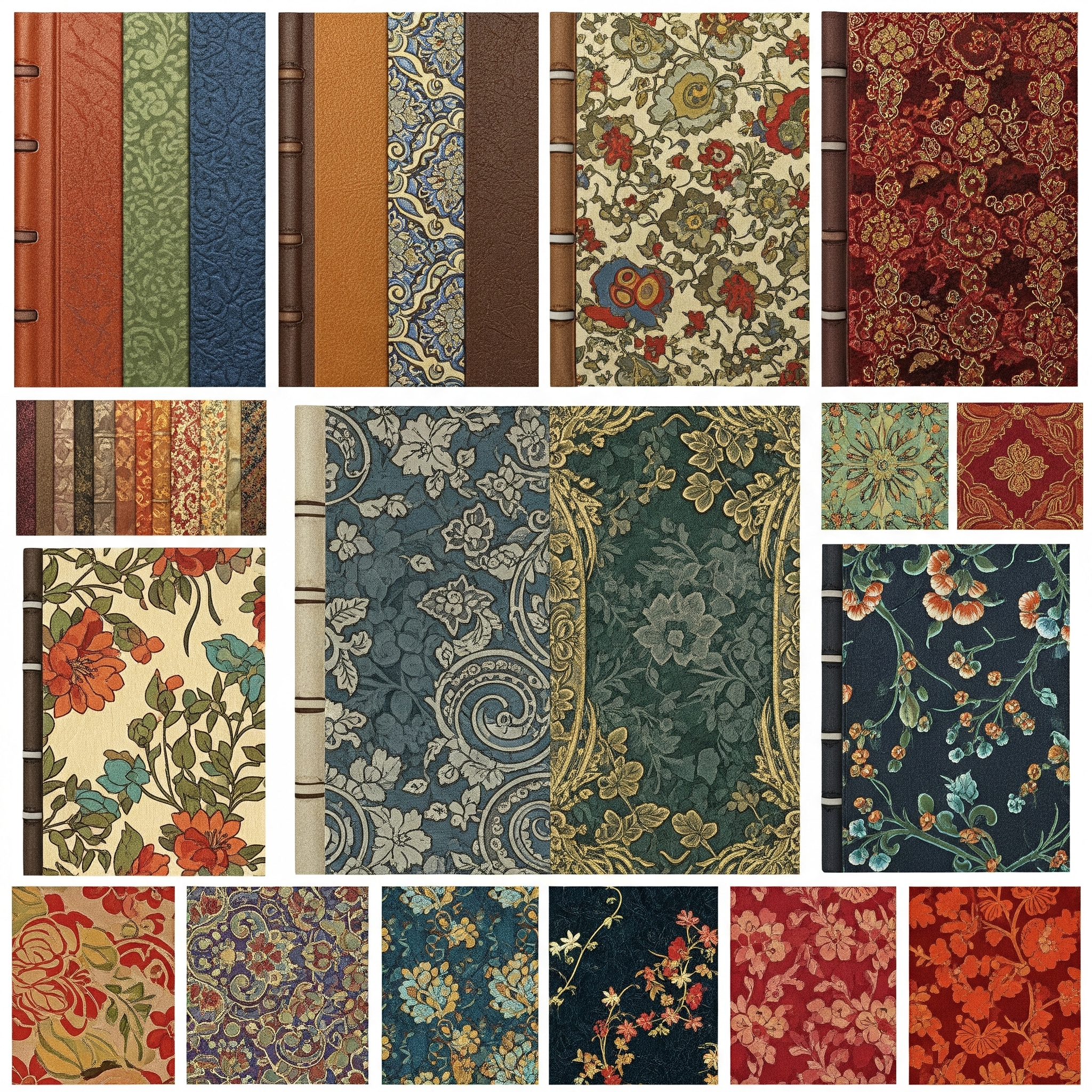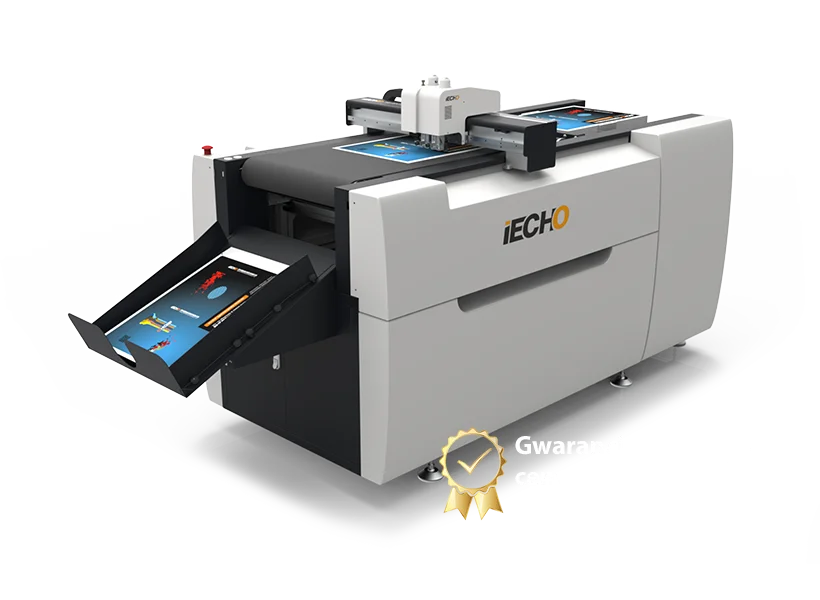Sublimation in bookbinding: The future of personalization and print quality
Sublimation is a printing technology that is revolutionizing the possibilities of personalization in the printing and bookbinding industry. For bookbinding companies looking for a competitive edge, sublimation offers unprecedented opportunities to create high-quality, personalized products with durable, vibrant colors that become an integral part of the material. With the growing demand for personalized products and the digital transformation of the printing industry, understanding sublimation technology is becoming critical to business success.
The sublimation market in Poland is benefiting from the dynamic growth of the entire printing sector in Central and Eastern Europe, where Poland accounts for 36% of the industry's €9.1 billion revenue. The growing demand for digital and eco-friendly solutions is creating ideal conditions for the development of sublimation technologies in Polish bookbinding.
What is sublimation in the context of printing and bookbinding
Sublimation is a physico-chemical process in which dyes from ink transform directly from a solid to a gaseous state under the influence of high temperature, bypassing the liquid phase. In practice, this means that during the sublimation printing process, special sublimation inks under the influence of 180-200°C penetrate the structure of polyester fibers or polymer-coated materials.
The key difference between sublimation and traditional printing methods is how the dye is applied. While traditional printing applies ink to the surface of the material, Sublimation embeds dyes at the molecular level directly into the structure of the material. This makes sublimation prints durable, resistant to cracking, peeling and fading, retaining vibrant colors for years.
The sublimation process uses special inks based on dispersed dyes, which turn gaseous at 350-400°F (177-204°C) and penetrate the polyester structure. After cooling, the dyes crystallize again, becoming a permanent part of the material.
How sublimation technology works in the printing industry
Sublimation technology is based on a precisely controlled thermal process using three key elements: heat, pressure and time. The process begins with a digital printing On special sublimation paper using dye-sublimation inks, which contain nano-dispersed dye particles of 0.1-1 micron size.
The first step is to prepare the design in CMYK color mode with a resolution of 150-300 DPI, and the image must be mirrored before printing. Then the design prints on the printer sublimation equipped with special inks, such as Epson SureColor F570 and Sawgrass SG1000 models.
The key moment is the transfer process, where the printed design is placed on polyester material and applied under a heat transfer press at the following parameters:
- Temperature: 380-400°F (193-204°C)
- Pressure: 40-60 PSI
- Time: 35-75 seconds depending on the thickness of the material
During this process, heat energy causes the pores in the polyester fibers to expand, allowing the gaseous dye molecules to penetrate the structure of the material. Once cooled, the pores close and the dye is permanently incorporated into the material.
Applications of sublimation in bookbinding and print finishing
Sublimation opens up new opportunities in bookbinding production, especially in the area of Book covers, binding materials and decorative elements. In bookbinding practice, sublimation is used in production:
Book covers: Specjalne tkaniny introligatorskie na bazie poliestru umożliwiają tworzenie pełnokolorowych, fotograficznych okładek z trwałymi nadrukami. Materiały sublimacyjne typu book cloth o wymiarach 40″ x 16″ zostały specjalnie opracowane dla zastosowań introligatorskich.
Binding materials: Sublimation allows personalization of book spines, liner pages and protective materials. Decorative elements made with sublimation technology are characterized by exceptional durability and resistance to use.
Notebooks and diaries: Covers made of materials PU with sublimation coating offer premium aesthetics with full personalization functionality.
The process of integrating with traditional bookbinding workflows is relatively simple - sublimation is applied to materials before final assembly, allowing standard production procedures to be maintained while adding personalization value.
Benefits of sublimation for bookbinding companies
Implementation of sublimation technology in the bookbinding company brings Tangible business benefits, starting with a 25-40% margin increase over traditional covers. This price advantage is due to the ability to offer premium services at relatively little additional cost.
Operational benefits include the elimination of the cost of preparing print forms, shortened lead times (same-day production is possible), and a drastic reduction in production waste due to on-demand production. The digital nature of the process allows cost-effective production of even single copies, which was previously unprofitable.
Diversification of offerings enables bookbinding companies entry into new markets, such as personalized publications, corporate gifts, educational materials or limited editions. The ability to offer full-color, photographic prints without quantity limitations opens access to the self-publishing and small specialty print sectors.
Competitive advantage is due to its unique technological capabilities - sublimation offers photographic quality, durability that surpasses traditional printing methods, and the ability to print without margins over the entire surface of the material.
The average payback period is 6-12 months for operating bookbinding companies, assuming monthly production of 500-1000 covers sublimation.
Equipment and machinery needed for sublimation processes
Basic equipment for sublimation consists of a sublimation printer, a thermal transfer press and a consumables. For small operations, desktop printers in the class of Epson SureColor F170 (A3 format) or Sawgrass SG500/SG1000, whose prices range from £1,000 to £8,000, are sufficient.
Commercial-grade printers include wide-format models like the Epson SureColor F570 Pro (24 inches wide) or industrial systems like the Mimaki TS330-1600 (up to 1.6 meters wide), with throughputs of up to 2,700 square feet per hour. The costs of these solutions are PLN15,000-4,000 and PLN15,000-300,000, respectively.
Thermal transfer presses They must provide precise temperature control (±2°C), even pressure distribution and digital timing control. Reputable brands such as Geo Knight & Co, HIX Corporation and Hotronix offer both pneumatic and manual solutions in the £1500-25000 price range.
Consumables include special sublimation inks (PLN 100-800 per set), sublimation paper (PLN 1-4 per sheet) and sublimation-compatible base materials. Monthly operating costs for an average production are about 500-2000 zlotys.
Infrastructure requirements include a stable electrical supply (110-240V), ventilation for vaporized carcasses, climate control (15-32°C, low humidity) and adequate working space - a minimum of 20 m² for a commercial operation.
Market trends and the future of sublimation in printing and bookbinding
Global sublimation market shows dynamic growth from a value of $14.9-17.6 billion in 2024 to a projected $25.5-28.9 billion in 2030, representing a compound annual growth rate (CAGR) of 8.9-11.3%. Europe is the largest regional market, with Poland as one of the key players in textile and printing product exports.
Key technology trends include the development of hybrid systems that combine sublimation with DTG and UV printing, enabling printing on a wider range of materials. FUZION Ink's 2024 technology allows for seamless integration of different printing methods into a single system.
Artificial intelligence is increasingly used in quality control, process optimization and workflow automation. Systems equipped with computer vision and thermal sensors ensure consistent quality with minimal operator intervention.
Environmental aspects are gaining traction - sublimation is a rain-free technology (100% ink transfer), requires no water in the production process and uses water-based inks with no VOC content. These features make sublimation a perfect fit with sustainability trends.
The future of materials points to the development of biodegradable substrates, coatings compatible with natural fibers, and recycled polyester materials, which will expand sublimation applications while maintaining environmental benefits.
Integration of sublimation with bookbinding processes
Workflow integration Sublimation with traditional bookbinding processes requires a thoughtful approach to sequencing operations. Sublimation is always applied prior to final assembly, allowing for standard gluing, sewing and finishing procedures.
Digital workflow begins with the preparation of the design in CAD software, followed by printing on sublimation paper, thermal transfer application and finally integration into the standard bindery process. It is crucial to ensure the correct sequence of operations to avoid damage to the print during further processing.
Quality control in an integrated process includes verification of sublimation parameters (temperature, pressure, time), checking for completeness of dye transfer and evaluating color consistency. Standard bookbinding QC procedures are expanded to include specific sublimation checkpoints.
Process automation can include material feed systems, integrated quality control stations and networked order management. Modern systems allow each product to be tracked from design to finished book.
Staff training should include both the technical aspects of sublimation and an understanding of its impact on subsequent production steps. Employees must understand the specifics of sublimation materials and their impact on standard bookbinding operations.
Materials compatible with sublimation in bookbinding applications
Basic compatible materials are primarily 100% polyester fabrics, which provide optimal sublimation results. Special polyester-based book cloths, blended fabrics with a minimum 65% polyester content and polymer-coated materials are used in bookbinding practice.
PU leather with sublimation coating offers premium aesthetics while maintaining personalization. The materials are waterproof, scratch-resistant and environmentally friendly compared to natural leather.
Composite materials combining different types of fibers with a polyester top layer allow sublimation while maintaining the desired mechanical properties of the base material. Polyester-cotton composites optimized for bookbinding applications are particularly popular.
Sublimation coatings allow to expand the range of compatible materials. Subli Glaze products allow sublimation application on wood, ceramics or metal, which opens up new possibilities in cover production luxury or decorative elements.
Specialty materials include gloss effect fabrics, 3D textured materials and magnetic substrates. These innovative solutions make it possible to create unique bookbinding products with additional functionalities.
Criteria for material selection include polyester content (minimum 65%), coating quality (even coverage), surface cleanliness and compatibility with subsequent bindery production steps. The right choice of material determines both the quality of the print and the durability of the final product.
Akonda, with more than 15 years of experience in the industry bookbinding machines, understands the challenges and opportunities facing Polish bookbinding companies. Sublimation represents a natural step in the technological evolution of the industry, offering new business opportunities using proven manufacturing processes. An investment in sublimation technology is an investment in the future - in a world of increasing demand for personalization and quality, companies equipped with these capabilities will shape the bookbinding market of the next decade.


